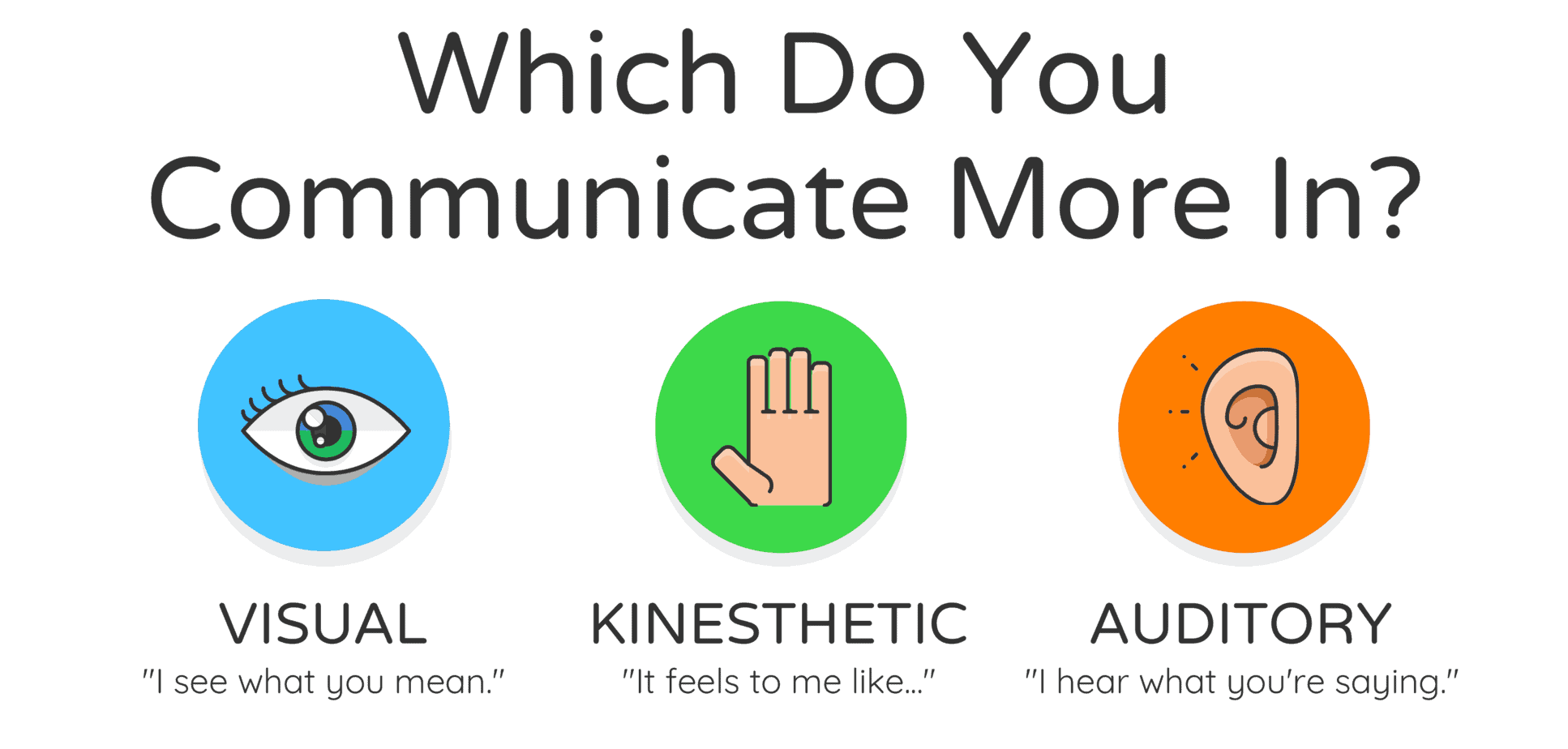
What are NLP VAK Modalities? Visual, Auditory & Kinesthetic
The Visual-Auditory-Kinesthetic learning styles model or 'inventory', usually abbreviated to VAK, provides a simple way to explain and understand your own learning style (and learning styles of others). 'Learning style' should be interpreted to mean an individual mixture of styles. Everyone has a mixture of strengths and preferences.

Every child learns differently, therefore, we incorporate methods to stimulate learning in the
Each of us has a preferred representational system (visual, auditory, kinesthetic or digital (auditory digital) - often referred to as VAK) - for more information on the NLP visual, auditory, kinesthetic and digital representational systems, please see the article Modalities and Representational Systems .
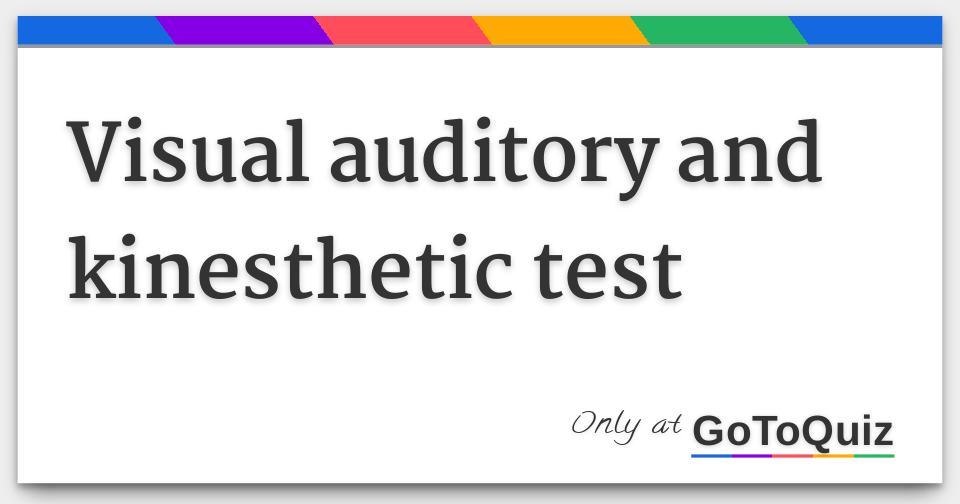
visual auditory and kinesthetic test
This test tests you according to the classical framework of auditory, kinesthetic, and visual learning styles. The theory of Learning Styles enjoys considerable popularity among educators, with many teachers using it in the classroom to help young people discover how best to succeed in life. What is your learning style?

Visual Auditory Kinesthetic Test AUDIO BARU
The results show that: (1) The VAK (Visualization, Auditory, and Kinesthetic) learning model influences student's learning motivation. It is indicated by the results of the Mann-Whitney U Test with a significance of 0,00; (2) The VAK (Visualization, Auditory, and Kinesthetic) learning model influences student's cognitive learning outcomes.

Instructional Design Courses Certification Discover Learning Designs
VARK learning styles suggest that there are four main types of learners: visual, auditory, reading/writing, and kinesthetic. The idea that students learn best when teaching methods and school activities match their learning styles, strengths, and preferences grew in popularity in the 1970s and 1980s. However, most evidence suggests that.

Who Benefits from AuditoryVisual Training? Moore Auditory Training
The acronym VARK stands for the four VARK modalities - Visual, Aural, Read/write, and Kinesthetic - sensory modalities that are used for learning information. Fleming and Mills (1992) suggested these four modalities that seem to reflect the experiences of students and teachers. Although there is some overlap between them they are defined as.

The multisensory learning approach, which involves visual, auditory,... Download Scientific
Do you want to see the whites of someone's eyes (visual), harangue someone over the phone (auditory), hammer your fists on the table (kinesthetic), or fire off a curt email (reading/writing)? Imagine yourself in an uncomfortable situation. If you were lost in a strange city at night, how would you find your way to your destination?
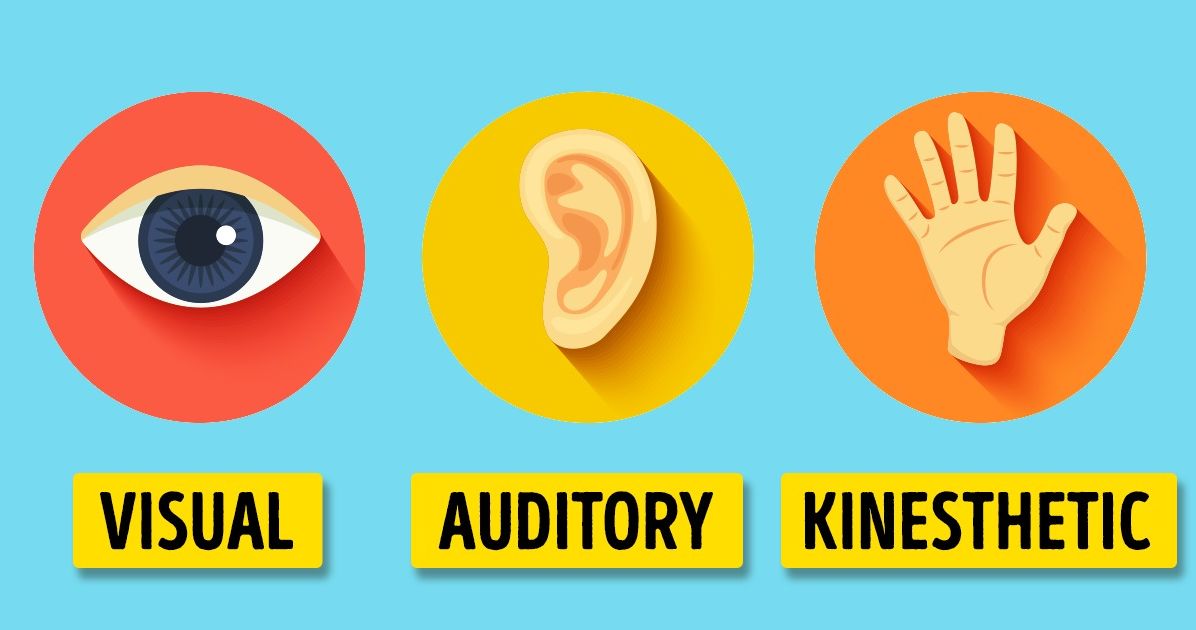
Test Are You a Visual, Auditory, or Kinesthetic Learner?
1. Unleashing Your Learning Potential: Tailoring Test Preparation for Visual Learners 2. Amplifying Success: Strategies for Auditory Learners to Ace Tests 3. Mastering Test Preparation: Recommendations for Kinesthetic Learners 4. Harnessing the Power of Multisensory Techniques: Boosting Test Scores for Visual, Auditory, and Kinesthetic Learners Q&A

Visual Auditory Kinesthetic PDF Conversation Cognition
Visual, Auditory, and Kinesthetic Modalities [TEST] Although people generally experience the world via five senses — sight, sound, touch, taste, and smell, each person may have their preferred mode of perception. There are three main modes of perception or modalities: visual, auditory, kinesthetic.
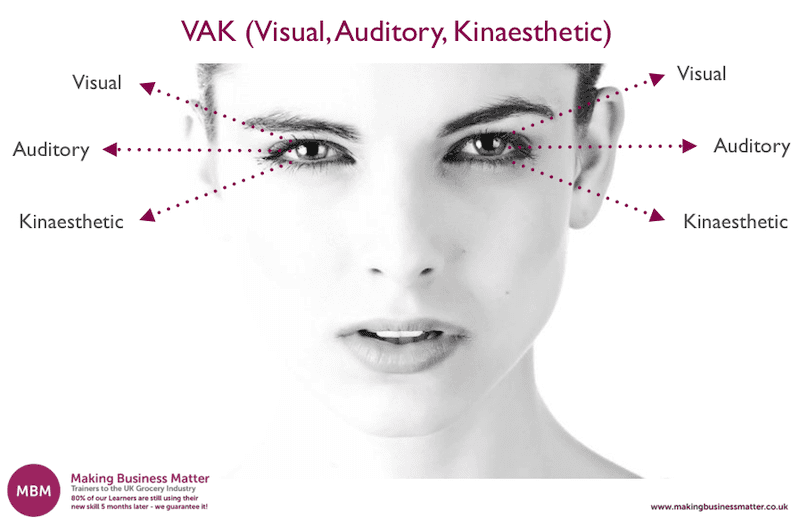
VAK Discover a Person's Visual, Auditory, or Kinaesthetic Style MBM
Take this VAK test and analyze your information processing style and how you best learn. The Visual-Auditory-Kinesthetic (VAK) learning styles theory provides a simple way to explain and understand the learning styles of others through one of these senses. People have varying visual, auditory, and kinesthetic (body-oriented) preferences.
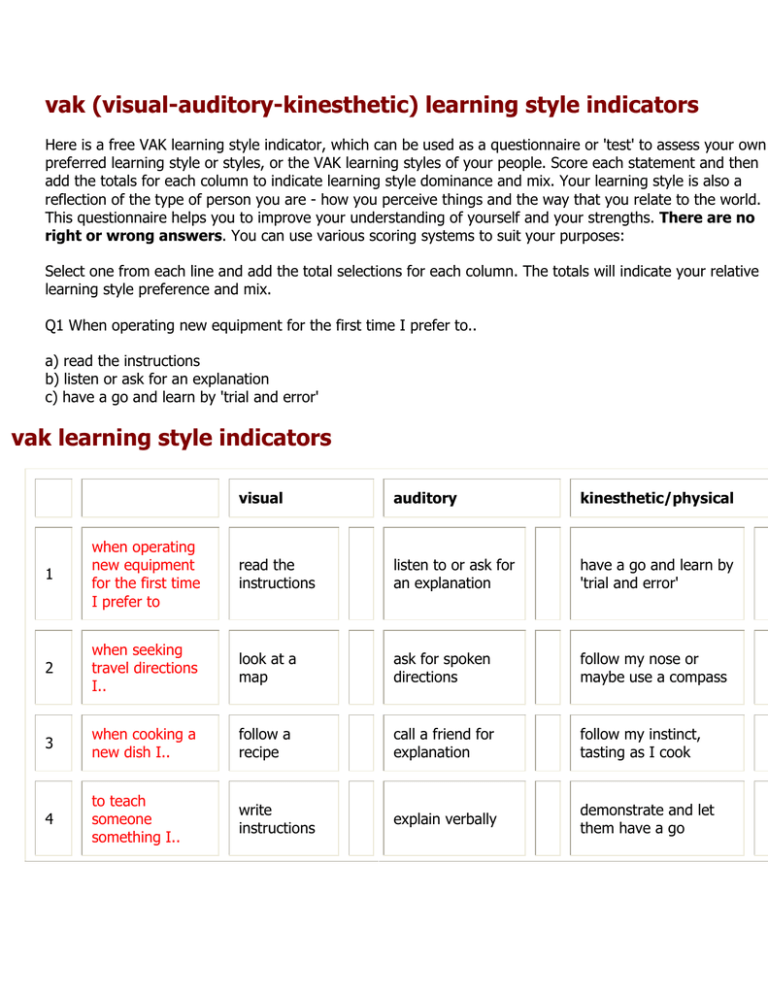
vak (visualauditorykinesthetic) learning style indicators
Learning Styles: VAK Model and Definition of Learning Styles. It has long been recognised that everyone learns slightly differently. But in the 1920s, psychologists developed a model to classify primary differences in learning styles. These learning styles are predominantly described as VAK: visual, auditory or kinesthetic (tactile).

413Wk3_7_Visual, auditory and kinaesthetic learning styles YouTube
We created the Visual, Auditory, or Kinesthetic (VAK) test to help you understand how you process information. It's important to remember though, this is subjective. We have designed this for edutainment purposes only. If you do feel you're burning out, please see your doctor.

Visual Auditory Kinesthetic Test AUDIO BARU
VAK Test VAK Learning Styles Explanation The VAK learning styles model suggests that most people can be divided into one of three preferred styles of learning. These three styles are as follows, (and there is no right or wrong learning style): Someone with a Visual learning style has a preference for seen or observed things,

Free VAK visual auditory kinesthetic learning styles test questionnaire Learning style test
LEARNING STYLES ASSESSMENT KINESTHETIC | VISUAL | AUDITORY INSTRUCTIONS | Circle the letter of the phrase that is true for you most of the time. When you have made all of your selections, record the number of times you chose each letter and use the table to discover your personal learning style.

Visual Auditory Kinesthetic Test AUDIO BARU
Home / Learning Styles Test Learning Styles Test 4,821,291 tests taken Learn How You Learn Best - Visual, Auditory or Kinesthetic This Learning Styles test is FREE with No Registration. We won't even ask for your email. Your results will tell you how strong each of your learning styles are. You can check all boxes below for a 20-page report.

Visual Auditory Kinesthetic Test AUDIO BARU
Understanding Visual, Auditory, and Kinesthetic Learning Styles. One way to be truly successful in the classroom is to wrap your head around the three different learning styles according to Fleming's VAK ( visual, auditory, kinesthetic) model. If you know how you learn best, you can use specific methods to retain what you learn in class.